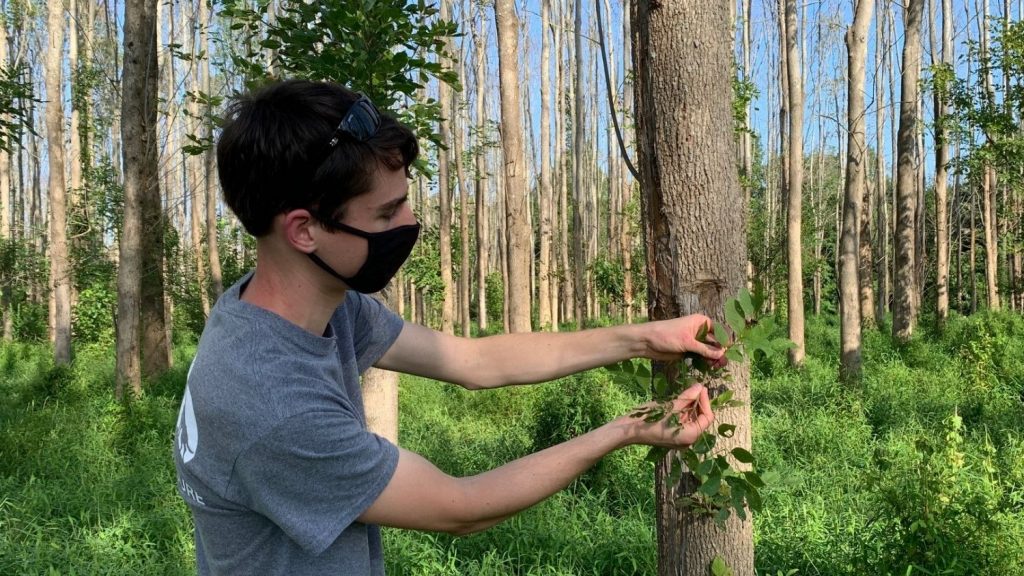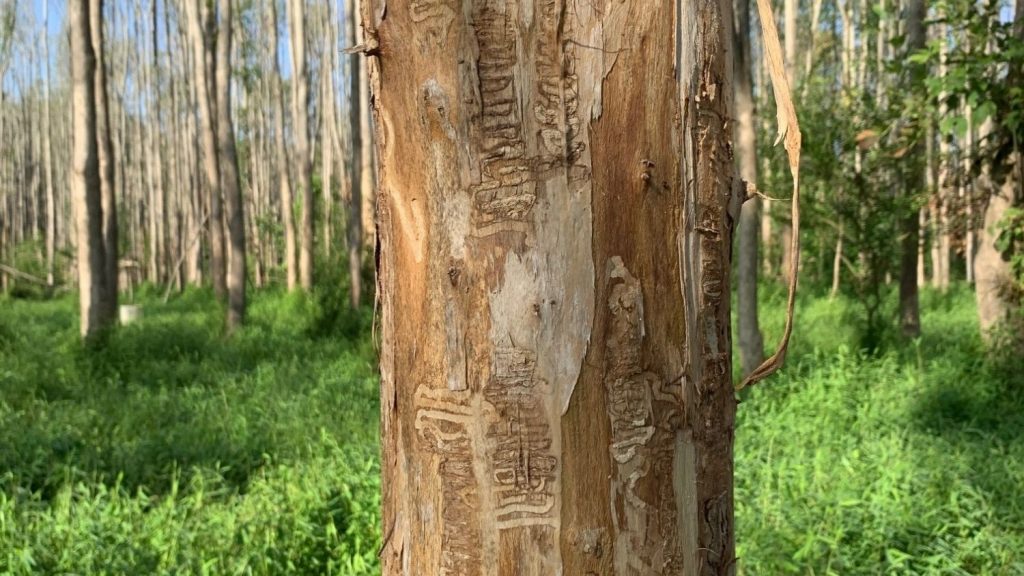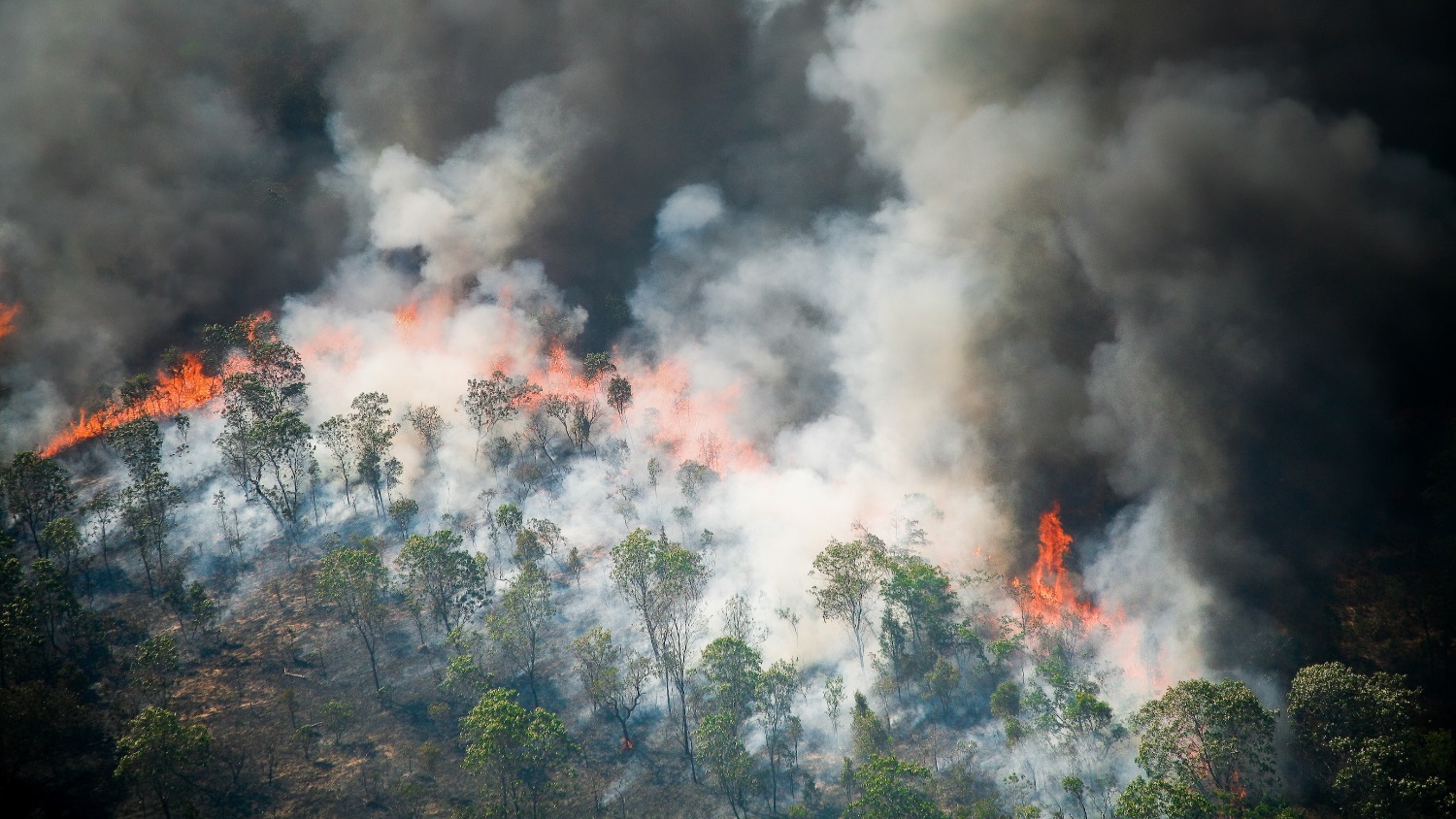Shielding their eyes from the bright morning sun, a group of researchers from North Carolina State University looked up to watch a drone take flight over a grove of trees. This was reconnaissance for another battle in a long-running fight – one that the trees are losing.
With an audible hum, the drone flew over the grove at 200 feet in a perfect, lawn-mower pattern, taking pictures. Working with geospatial data and images from the drone, the researchers will create a visual map of healthy, unhealthy and dead trees.
The researchers hope to identify individual green ash trees that might be winning the fight against the invasive emerald ash borer, or Agrilus planipennis, an insect that feeds on ash trees and kills them in the process. They want to use what they can find about the trees’ natural resistance to help conserve ash trees as a whole. The flight was their first attempt – a pilot effort – to see if the strategy might work.
“We know there’s variation in genetics and we want to know if that variation could allow some trees to be naturally more resistant to the emerald ash borer than others,” said project leader Kelly Oten, an assistant professor in NC State’s Department of Forestry and Environmental Resources. “Using the drone, we hope we can easily spot trees that are surviving or dying more slowly, and then try to understand how and why, and if we can use them for restoration purposes.”
Spreading quickly and easily
The emerald ash borer is native to Asia and likely arrived in the United States in wood packaging materials. Since first being sighted in the U.S. in 2002, it has destroyed millions of ash trees across 35 states, according to the U.S. Department of Agriculture (USDA).
Natural resource professionals have tracked the emerald ash through 60 counties in North Carolina since it was first found in the state in 2013.
“It’s spreading quickly and easily and killing all of our ash trees,” Oten said.
Researchers have launched an effort to protect ash trees through the release of a natural predator of the emerald ash borer: parasitoid wasps. After an initial environmental assessment and quarantine period, the USDA began releasing wasps in Michigan in 2003 as a biological control method.
Oten has studied the use of parasitoid wasps as a management tool in North Carolina since 2013. She has led the release of more than 1,500 wasps at the stand of green ash trees in Garner. Previously, through her work with the N.C. Forest Service, she led the release of more than 90,000 wasps across the state.
But Oten thinks there could be a “life cycle mismatch” problem in that the emerald ash borer is in the wrong life stage when the wasps are released, leaving the wasps with no food source. Now, they are studying the life cycle of the emerald ash borer in-depth using insects collected from the stand in Garner.
Ryan Bohannon, a graduate student at NC State, collects and documents all stages of the emerald ash borer at two-week intervals. The goal is to better understand the life cycle of the pest in order to time the release of the wasps appropriately.

The work with the drones is their newest effort to try to see if certain trees have natural resistance to the insect. Oten said they do not know if or how trees are resistant, but they speculate that certain trees could be less attractive to the emerald ash borer, while others could have some kind of defense response.
Justyna Jeziorska, a research associate with the NC State Center for Geospatial Analytics, is leading the drone reconnaissance effort for NC State. Using computer software, Jeziorska will knit together the images to create a map. Researchers will take additional pictures over time, creating maps that allow them to identify surviving trees.
If they find trees with those protective traits, they could breed them or use those varieties when planting. Ultimately, researchers want to propagate the potentially resistant trees and use them for urban plantings or forest restoration.
“Emerald ash borers will wipe out an entire stand, but a tree or two sometimes survives,” Oten said. “It’s at a very low level, but in other parts of the U.S. where emerald ash borers had caused devastation for a while, they’re starting to see indications that there is resistance in native ash.”
‘Part of our lives’
Ash trees are an important and valuable tree, said project collaborator Elizabeth Nichols, professor in the Department of Forestry and Environmental Resources. They have been studied for their role in wastewater treatment and for their value in furniture and other products.
The grove in Garner was originally planted to absorb treated wastewater.
“Ash trees are part of our lives – from furniture veneer to baseball bats, and they are important species in our natural forests,” she said.
Green ash trees are native to North Carolina, but they are not typically found in isolated, large groves.
“In North Carolina, we typically don’t have pure stands of ash,” Oten said. “They’re usually a component of the forest ecosystem. At this site, we have thousands of ash randomly planted more than 20 years ago using native North Carolina seed.”
Some of the trees stood bare, killed by the pest. Others showed signs of stress. A few trees still have a strong canopy of leaves.
“Most of the living trees are infested,” Bohannon said, as he walked into the grove.
He pointed to one tree whose bark had been stripped away. There were visible markings from where the borer larvae had fed. On another tree, he pointed to a small hole that had been bored by an adult insect as it emerged.
Researchers hope their work is successful so they can control the emerald ash borer within a forest. While chemicals can be used to control them on individual, high-value trees, the cost makes it difficult to do on a large scale.
“We want to improve management of the emerald ash borer to save our ash trees within forests,” Oten said. “My ulterior motive is to become a drone pilot.”

-oleniacz-
The project to study the life cycle of the emerald ash borer is funded by the U.S. Department of Agriculture Animal and Plant Health Inspection Service. In addition to Oten and Jeziorska, collaborators on the drone project include Nichols and Robert Jetton of the NC State Department of Forestry and Environmental Resources.
- Categories:



